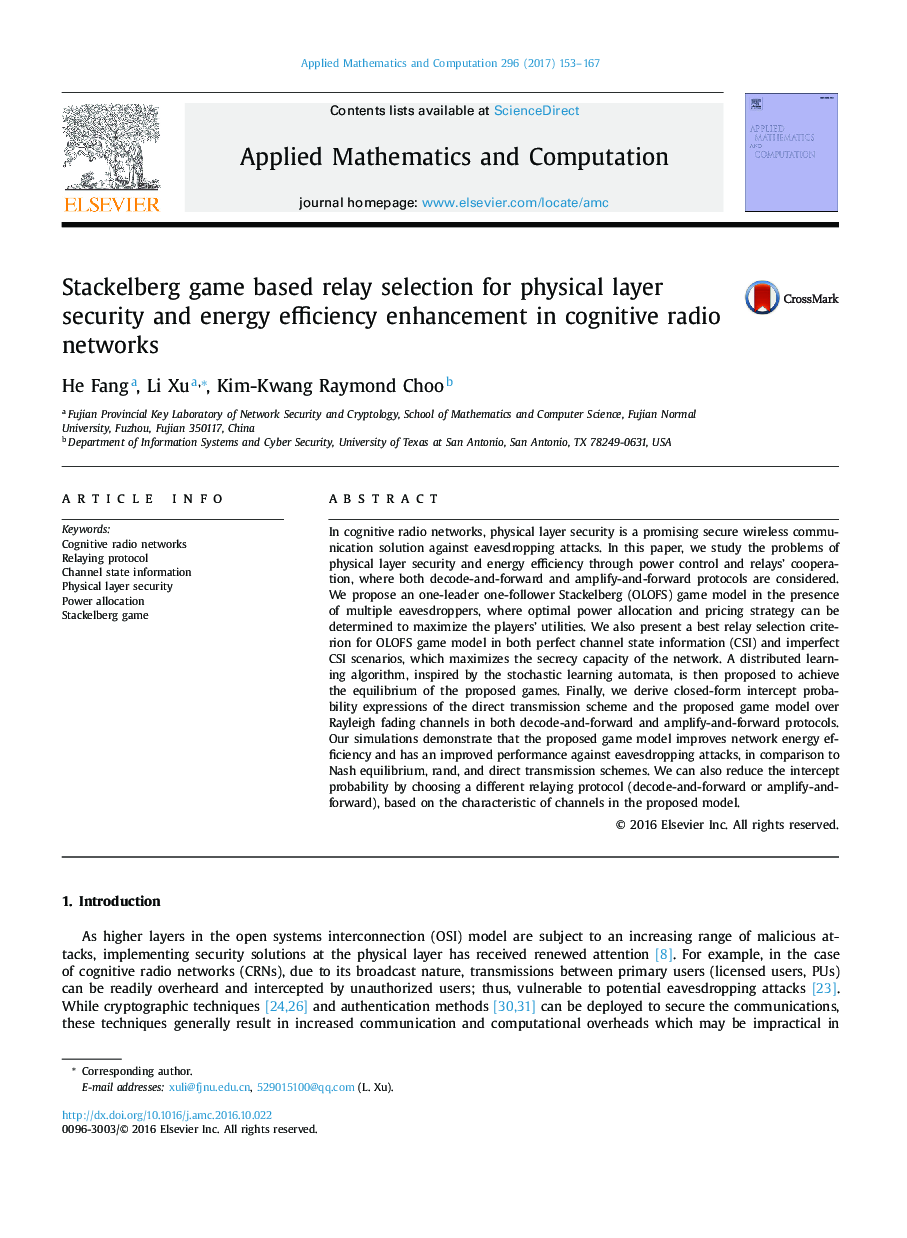| Article ID | Journal | Published Year | Pages | File Type |
|---|---|---|---|---|
| 4625463 | Applied Mathematics and Computation | 2017 | 15 Pages |
In cognitive radio networks, physical layer security is a promising secure wireless communication solution against eavesdropping attacks. In this paper, we study the problems of physical layer security and energy efficiency through power control and relays’ cooperation, where both decode-and-forward and amplify-and-forward protocols are considered. We propose an one-leader one-follower Stackelberg (OLOFS) game model in the presence of multiple eavesdroppers, where optimal power allocation and pricing strategy can be determined to maximize the players’ utilities. We also present a best relay selection criterion for OLOFS game model in both perfect channel state information (CSI) and imperfect CSI scenarios, which maximizes the secrecy capacity of the network. A distributed learning algorithm, inspired by the stochastic learning automata, is then proposed to achieve the equilibrium of the proposed games. Finally, we derive closed-form intercept probability expressions of the direct transmission scheme and the proposed game model over Rayleigh fading channels in both decode-and-forward and amplify-and-forward protocols. Our simulations demonstrate that the proposed game model improves network energy efficiency and has an improved performance against eavesdropping attacks, in comparison to Nash equilibrium, rand, and direct transmission schemes. We can also reduce the intercept probability by choosing a different relaying protocol (decode-and-forward or amplify-and-forward), based on the characteristic of channels in the proposed model.
